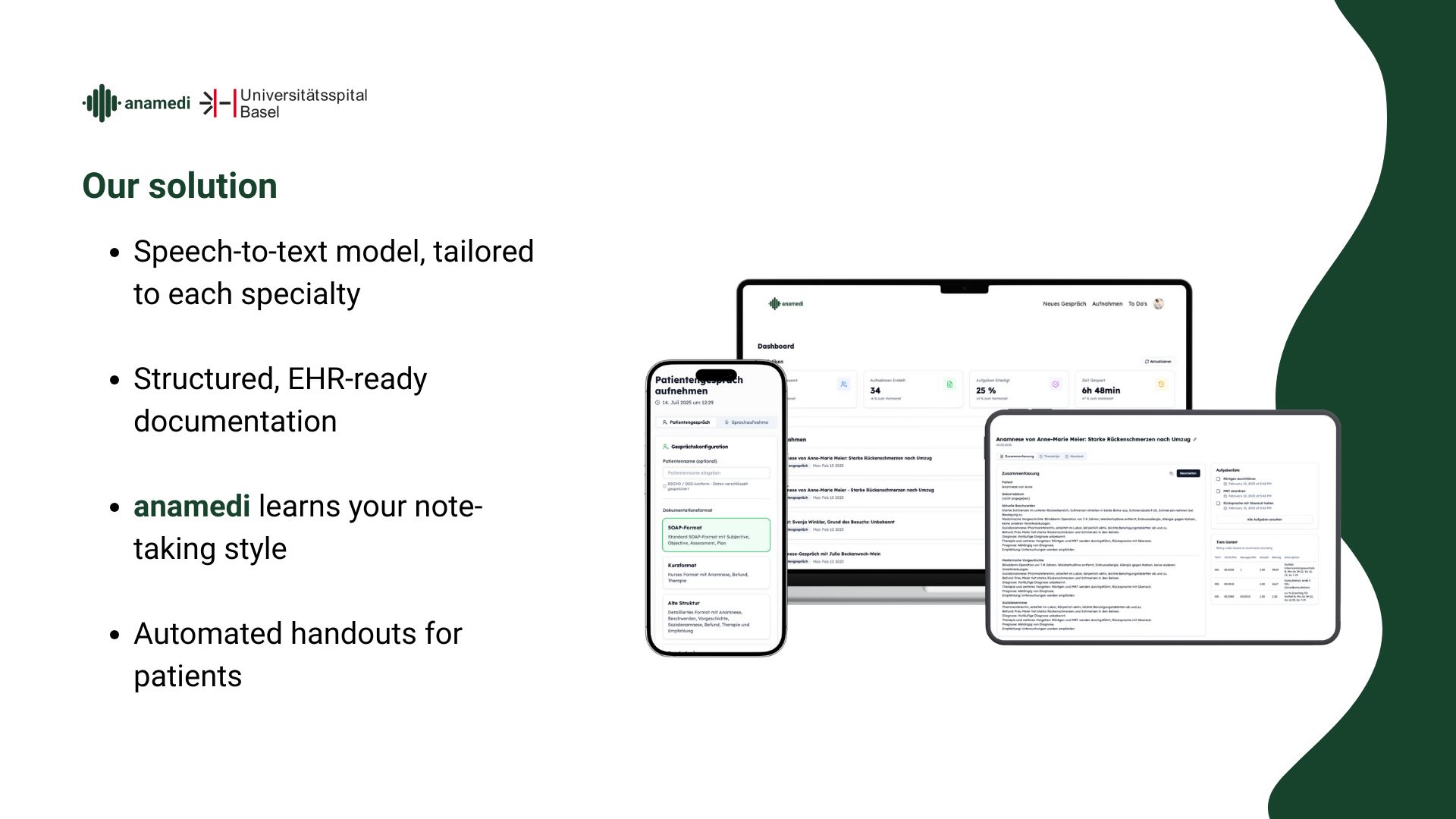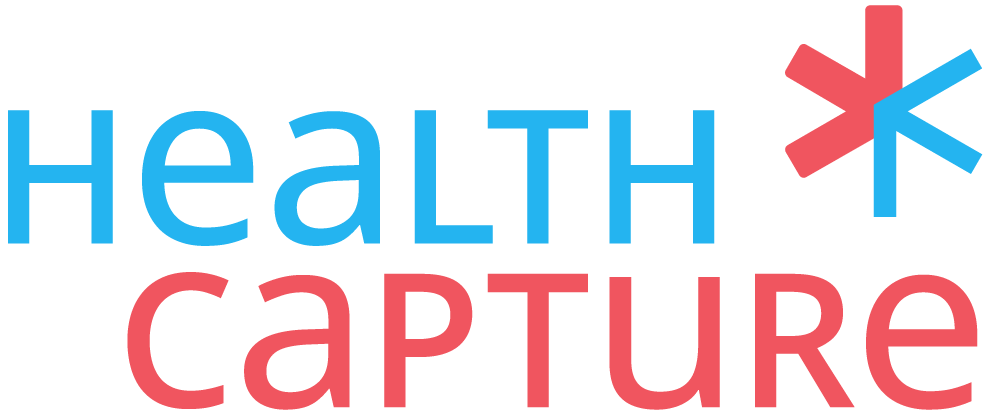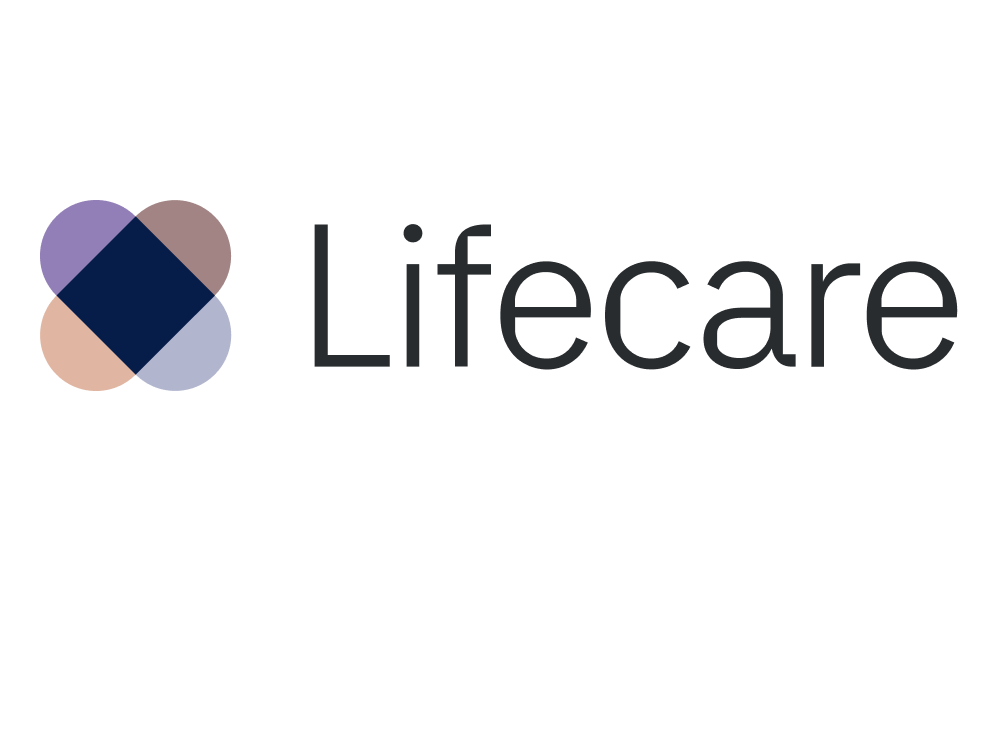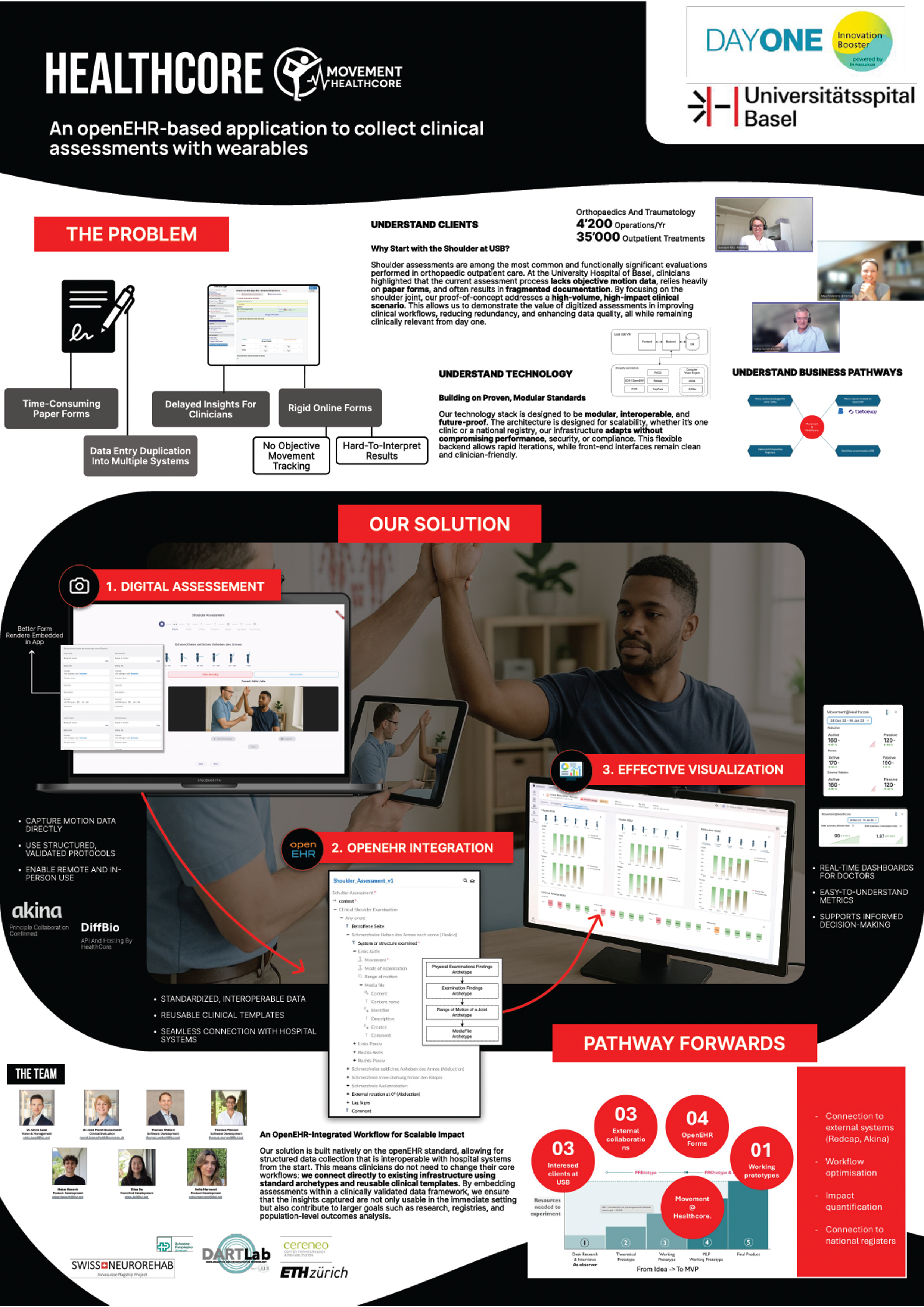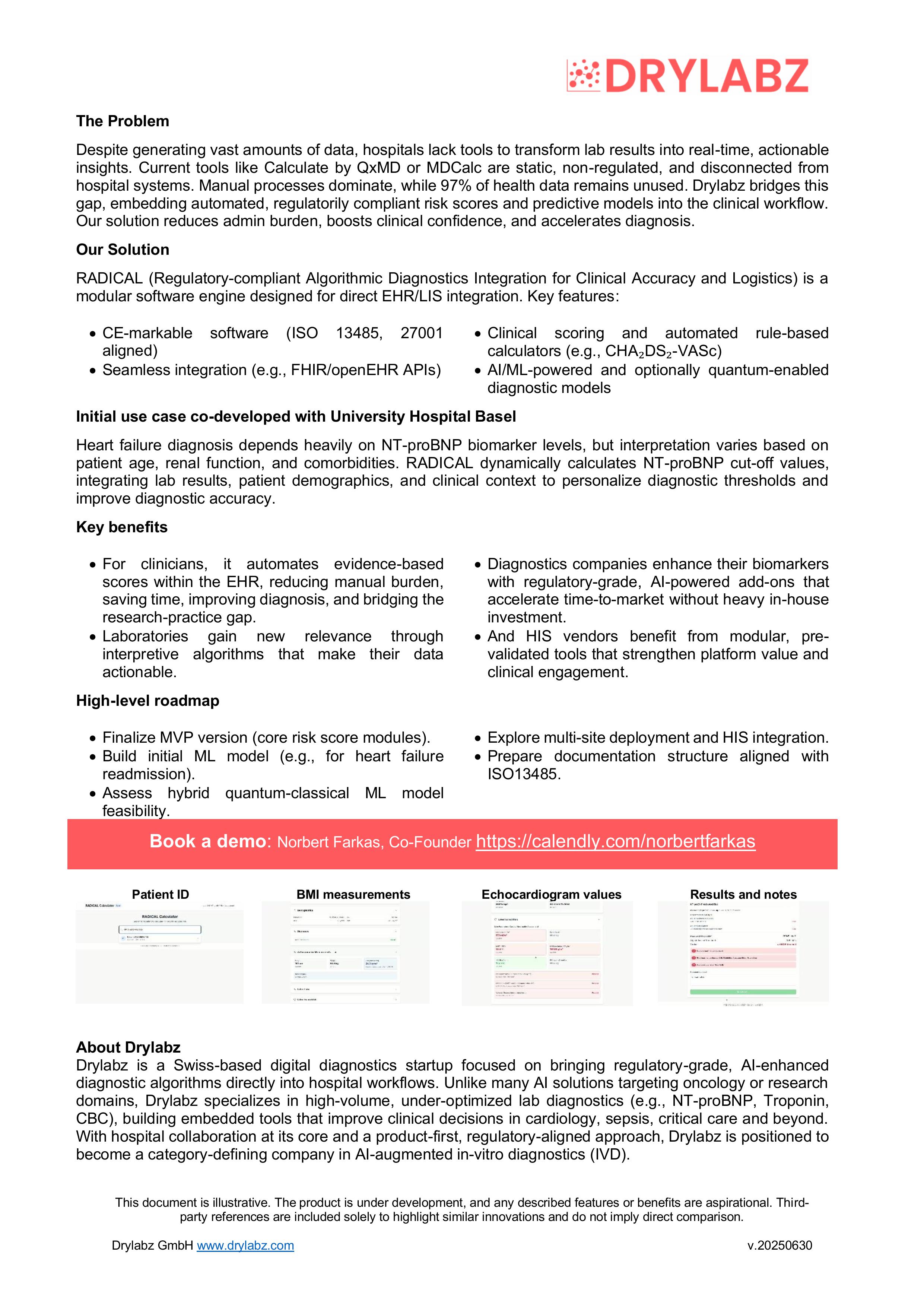Open Innovation Challenge: Improving clinical data capture for better healthcare outcomes
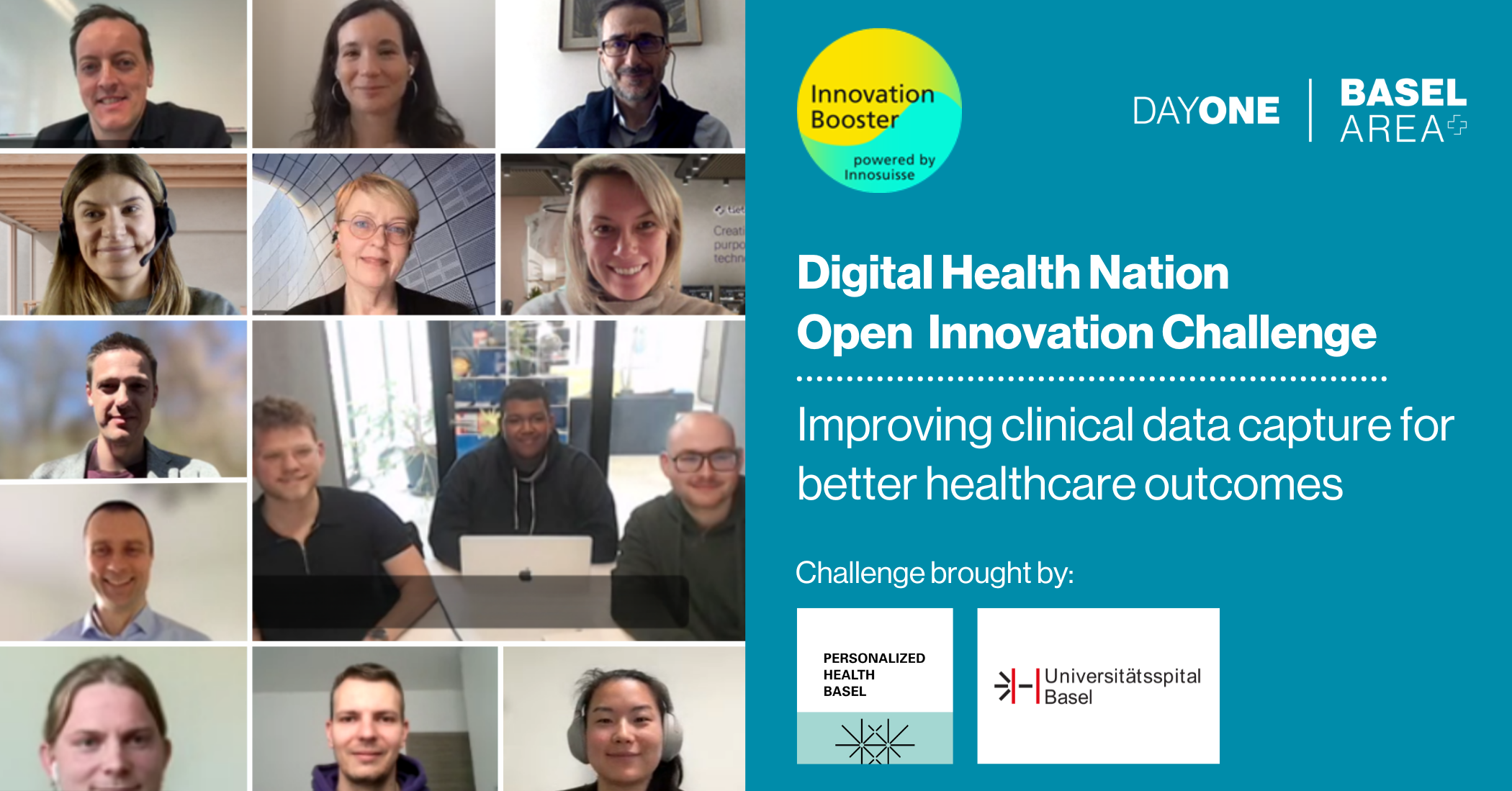.png)
🌟 Meet the Selected Projects!
After an enthusiastic response, a competitive selection process and an outstanding work, we are delighted to present the six winning teams and their solutions:
anamedi
Maks Kasparzyk, Max Mendes & Julian Kempf (anamedi), Simon Egli (USB)
Problem to be solved: AClinicians at USB face a growing documentation burden due to increasingly complex reporting requirements. Time spent on administrative tasks like medical documentation reduces time available for direct patient care, contributes to burnout, and delays communication between departments and care providers. Additionally, existing EHR interfaces often make structured data entry time-consuming and unintuitive, limiting the clinical value of interoperable data standards like openEHR.
Solution developed: Anamedi is an AI-powered ambient scribe solution that automatically transcribes and structures patient-doctor conversations into clinical documentation using speech recognition, speaker diarization, and medical NLP. The system outputs a complete, editable SOAP note. It supports intuitive, low-effort input into openEHR-based systems by mapping extracted information to openEHR templates and structures. The solution is securely hosted and tailored to meet Swiss data protection requirements.
Impact on USB: By reducing time spent on documentation, Anamedi enables USB clinicians to focus more on patient care. It also lays the groundwork for structured clinical data reuse. Easy integration with openEHR ensures that structured data can be meaningfully reused for research, quality assurance, and secondary use cases, aligning with USB's long-term digital health goals.
Health Capture
Michaël Laurac, François von Kaenel, Kay Hanusch (Bern University of Applied Sciences)
Problem to be solved: Pain is one of the most frequently reported symptoms, yet patient reports are often subjective, unstructured, and delayed. Time constraints, stress, health literacy, and language barriers further compromise accuracy. This leads to incomplete histories, forcing clinicians to reconstruct information, increasing risks of misdiagnosis, delayed care, and rising healthcare costs.
Solution developed: Health Capture enables patients to document pain in a structured, clinically meaningful way over time. Covering key dimensions—intensity, location, duration, quality, and management—it transforms subjective narratives into actionable data. Using the openEHR standard, it supports integration with clinical systems and improves diagnostic accuracy, communication, and care decisions across all specialties and stages of care.
Impact on USB: At USB, Health Capture has sparked interest among professionals and patients through a clickable mock-up and co-designed openEHR pain report template. It offers potential to streamline pain documentation, enhance communication, and integrate with clinical IT systems. AN upcoming MVP will enable testing of openEHR integration and deeper collaboration.
Lifecare Clinical Modules
Sofia Kauppila, Mika Kiviaho, Kaisa Kauppinen, Maaike Beenen (Tietoevry)
Problem to be solved: Clinical data capture at the hospital is fragmented and time-consuming, making it difficult to use information effectively for patient care. There is a need for a solution that fits into existing clinical workflows and supports clinicians in delivering better healthcare outcomes.
Solution developed: We adapted the workflows of the Lifecare openEHR-based Clinical Modules, which are already in production in the Nordic countries, with a visualised co-created UI prototype to meet the needs of USB. We started with user research to gain an understanding of the existing workflows in the emergency department. A UI prototype was then co-created and validated with clinicians to collect feedback for the future steps. We demonstrated the full patient journey at the emergency department with success.
Impact on USB: USB gained understanding of how openEHR and Lifecare applications can improve care processes at USB and how these modules fit in to the hospital context and clinical workflows.
Movement@HealthCore
Chris Awai, Thomas Weikert, Elisa Du, Oskar Boesch (Data Analytics & Rehab Tech DART, Lake Lucerne Institute)
Problem to be solved: For 70% of the population, the ability to move our limbs naturally and efficiently becomes compromised at some point in life due to injury or degeneration. Movement impairment is currently measured using clinical ratings for functional tasks, which depend heavily on the experience of the raters. Variability in these ratings makes it time consuming and difficult to, for instance, compare outcomes of different surgical and therapeutic procedures.
Solution developed: We propose a video-based assessment workflow that is directly integrated into OpenEHR and can be both more efficient and more precise than the state of the art. The traditional assessment workflow is digitised in OpenEHR, removing the current need for manual data replication. In addition, we provide a connector to a video backend, that can automate 3D kinematic analysis and provide the movement data into OpenEHR.
Impact on USB: Objective, high-definition 3D movement performance evaluation becomes available at scale. At the same time, fragmented workflows could be unified into a single, re-deployable solution. We currently evaluate offering the solution to further internal clients at USB and integrating it into national registries.
Nutrition Tracker
Raban Iten, Daniel Zhang, Jonathan Perraudin, Vasily Koplylov, otam Bergfreund, Joëlle Wickart, Nicolas Parel, Robert Schreiber (Alpinasana AG)
Problem to be solved: Precise tracking of nutritional intake and identifying malnutrition.
Solution developed: A fully autonomous system measuring the nutritional intake of patients.
Impact on USB: Improved treatment quality, lower treatment costs, staff relief for nurses, and additional revenue for the hospital.
RADICAL: Regulatory-compliant Algorithmic Diagnostics Integration for Clinical Accuracy and Logistics
Fabian Franzeck (USB), Christian Mueller (USB), Norbert Farkas (Drylabz), Martin Murin (Drylabz)
Problem to be solved: Artificial Intelligence (AI) has transformed image-based diagnostics in pathology and radiology, yet medical calculators, clinical scoring systems, and simple algorithms are still largely computed manually, causing unnecessary manual work, less patient facing time and potential errors.
Solution developed: RADICAL is a modular software engine designed for direct EHR/LIS integration. Key features:
- CE-markable software (ISO 13485, 27001 aligned)
- Clinical scoring and automated rule-based calculators (e.g., CHA₂DS₂-VASc)
- Seamless integration (e.g., FHIR/openEHR APIs)
- AI/ML-powered diagnostic models
Impact on USB:
- Minimizes physician time spent on manual clinical score calculations
- Frees up time for more patient-facing, value-added care
- Reduces errors associated with manual data entry and calculation

